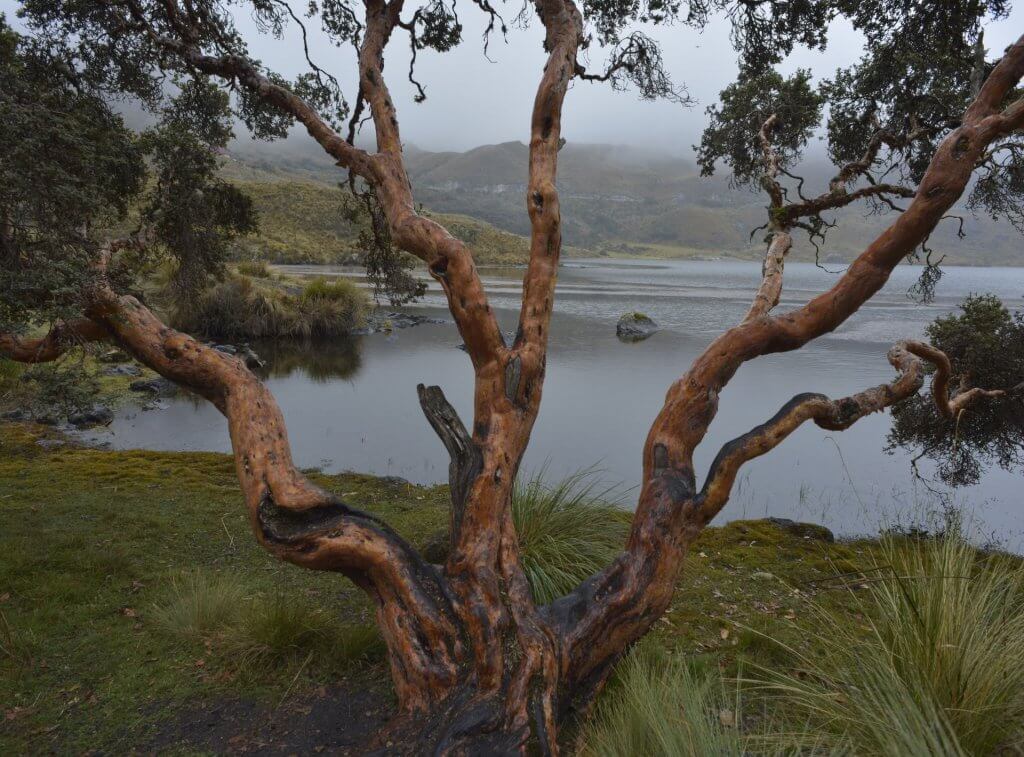Critical Páramo Ecosystem Receives Highest Legal Protection in Ecuadorian Andes
03/09/2022
Curiquingue-Gallocantana Conservation Area provides fundamental water source for local populations and contributes to a biological corridor that is essential for the survival of many Andean species.
Nature and Culture International celebrates the incorporation of the Cuiriquingue-Gallocantana Municipal Conservation Area of Cuenca into Ecuador’s National System of Protected Areas. On February 11, 2022, Curiquingue-Gallocantana was officially declared by the Ministry of Environment, Water and Ecological Transition of Ecuador as a Municipal Decentralized Autonomous Protected Area. This declaration will ensure the maximum protection of 2,965 acres of páramo, wetlands, polylepis or paper trees forests, and critical water supplies.

Curiquingue-Gallocantana is one of the most important water sources for the more than 500,000 inhabitants of the city of Cuenca. The municipal water company ETAPA EP purchased the area in 2012 to protect the city’s water sources. Last year Curiquingue-Gallocantana was declared one of Cuenca’s Municipal Conservation and Sustainable Use Areas along with two other areas: Mazán and Machángara.
Municipal conservation status safeguards habitat from threats such as forest fires and cattle ranching; however, reserves require national protection status to permanently prevent exploitative activities, such as mining, in the area. With the help of caring people like you, in 2021 Mazán was officially incorporated into Ecuador’s National System of Protected Areas, and in February 2022 Curiquingue-Gallocantana followed, providing the reserves with the highest level of legal protection in the country.
“The declaration of the Conservation and Sustainable Use Areas in the Cuenca was a historic milestone in the conservation of environmental resources and services, and today we are pleased to have supported the declaration of Curiquingue-Gallocantana and its integration into the National System of Protected Areas, just as we did with Mazán. This is the only legal way for the area to be protected forever from any type of exploitation,” said Fabián Rodas, coordinator of Nature and Culture International in Cuenca.
Curiquingue-Gallocantana is located within the remarkable Cajas Massif Biosphere Reserve, the first biosphere reserve in Ecuador’s western Andes, created as a result of a collaboration between Nature and Culture and local organizations. Adjacent to other protected areas such as the Cajas National Park and the Machangara-Tomebamba Protected Forest, Curiquingue-Gallocantana ensures critical habitat connectivity in the region for wide-ranging animals such as the Puma (Puma concolor) and Andean Bear (Tremarctos ornatus).

Since 2018, Nature and Culture International has played a leading role in the creation and enhancement of Cuenca’s Municipal Conservation and Sustainable Use Areas, working with partner organizations on the mapping of protected areas, technical document development, and social and political outreach. For the Minister of Environment, Gustavo Manrique, the incorporation of this area into the highest category of national protection is crucial because this area offers important ecosystem services such as water generation and purification. During the declaration of Curiquingue-Gallocantana, he made a commitment on behalf of the country’s Ministry of Environment to continue working for the protection of critical ecosystems.
Pedro Palacios, Mayor of Cuenca, hopes that soon the Machángara Municipal Conservation and Sustainable Use Area will also be included in the National System of Protected Areas to ensure its maximum protection.

With your support, Nature and Culture will continue to work with the Municipality of Cuenca and the Ecuadorian Ministry of Environment to ensure the incorporation of Machángara, the last remaining Municipal Conservation and Sustainable Use Area, into the country’s National System of Protected Areas. We will continue to support the Municipality of Cuenca and the Public Drinking Water Company in the sustainable management of the two new Municipal Decentralized Autonomous Protected Areas.
This achievement was made possible by our partnerships with the Environmental Management Commission of the Municipality of Cuenca, the Ministry of Environment, the Water Fund for the Conservation of the Paute River Basin (FONAPA), the Municipality of Cuenca, and ETAPA EP.


